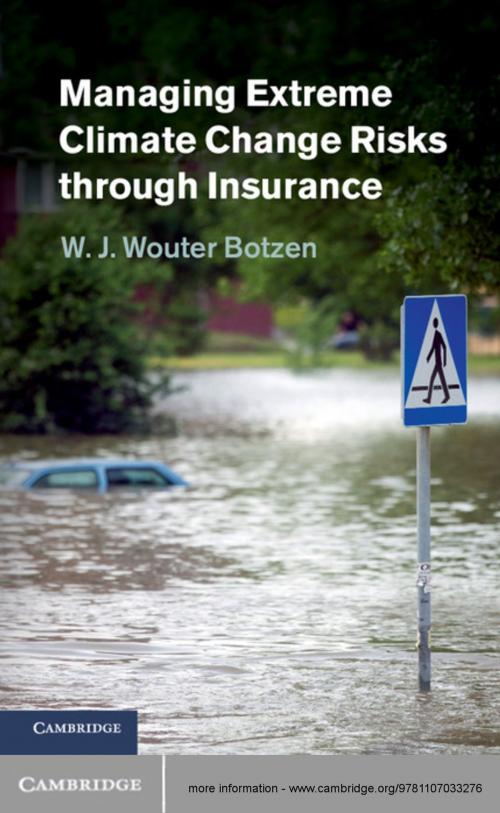Managing Extreme Climate Change Risks through Insurance
Business & Finance, Economics, Nonfiction, Science & Nature, Nature| Author: | W. J. Wouter Botzen | ISBN: | 9781107357990 |
| Publisher: | Cambridge University Press | Publication: | March 28, 2013 |
| Imprint: | Cambridge University Press | Language: | English |
| Author: | W. J. Wouter Botzen |
| ISBN: | 9781107357990 |
| Publisher: | Cambridge University Press |
| Publication: | March 28, 2013 |
| Imprint: | Cambridge University Press |
| Language: | English |
In recent years, the damage caused by natural disasters has increased worldwide; this trend will only continue with the impact of climate change. Despite this, the role for the most common mechanism for managing risk - insurance - has received little attention. This book considers the contribution that insurance arrangements can make to society's management of the risks of natural hazards in a changing climate. It also looks at the potential impacts of climate change on the insurance sector, and insurers' responses to climate change. The author combines theory with evidence from the rich experiences of the Netherlands together with examples from around the world. He recognises the role of the individual in preparing for disasters, as well as the difficulties individuals have in understanding and dealing with infrequent risks. Written in plain language, this book will appeal to researchers and policy-makers alike.
In recent years, the damage caused by natural disasters has increased worldwide; this trend will only continue with the impact of climate change. Despite this, the role for the most common mechanism for managing risk - insurance - has received little attention. This book considers the contribution that insurance arrangements can make to society's management of the risks of natural hazards in a changing climate. It also looks at the potential impacts of climate change on the insurance sector, and insurers' responses to climate change. The author combines theory with evidence from the rich experiences of the Netherlands together with examples from around the world. He recognises the role of the individual in preparing for disasters, as well as the difficulties individuals have in understanding and dealing with infrequent risks. Written in plain language, this book will appeal to researchers and policy-makers alike.















